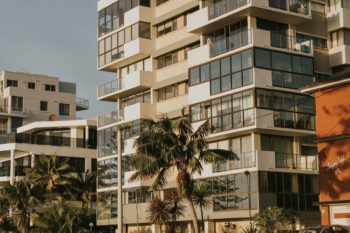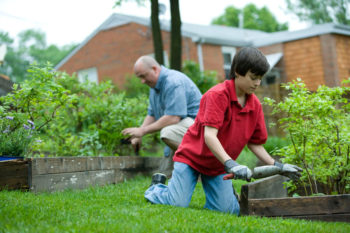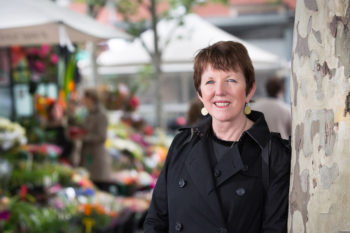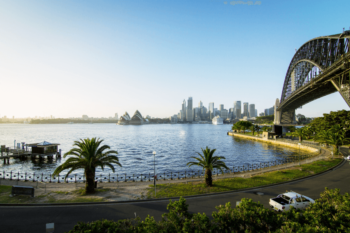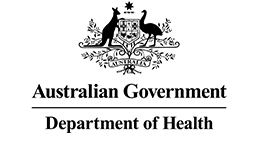Creating liveable cities and healthy communities

Status completed
Start Date
End Date
The creation of liveable and sustainable communities is a priority of national and international urban policy.
This project developed ways to measure the key factors that make our cities healthy and liveable.
Introduction
Researchers worked with policy makers and practitioners responsible for creating the built environment, and provided them with evidence about optimal city design to create good health.
The policy-relevant liveability measures have been validated with chronic disease risk factors and are now suitable for monitoring progress towards creating more liveable and sustainable Australian cities.
Our research impact
Featured project resources
-
Why liveable cities are important for better health equity
Resource category:Podcasts
Date -
How we can create healthier, liveable cities
Resource category:Videos
Date -
Creating healthy liveable neighbourhoods
Resource category:Findings Brief
Date -
How city design affects our health
Resource category:Videos
Date
Featured project news
-
Report card on the liveability of our cities
News Category: Prevention Centre NewsDate -
New online tool to compare liveability of individual addresses
News Category: Prevention Centre NewsDate -
Bottle shops, pubs and clubs: Why location matters for the health of disadvantaged communities
News Category: Media releasesDate
About
Reconnecting urban planning with health - The development and validation of national liveability indicators associated with chronic disease risk factors and health outcomes
Project titleWhy is health important for liveability?
In the 19th century, when outbreaks of infectious diseases were linked to poor urban sanitation, it was recognised that city design affected public health. However, links between planning and health later weakened.
Recently there have been calls for public health and planning disciplines to reconnect – this time to create cities that make it easier for people to live healthier lives to reduce their risk of chronic disease.
Across the sectors of public health, transport and planning, there is a push to recommend urban design that promotes active travel, public transport, healthy diets, and public open spaces. The creation of liveable and sustainable communities is a priority of Australian and international urban policy.
In earlier work, Professor Billie Giles-Corti’s team identified 11 domains of liveability, based on the social determinants of health, that likely contribute to health and wellbeing.
The 11 domains of liveability that likely contribute to health
- Crime and safety;
- education;
- employment and income;
- health and social services;
- housing;
- leisure and culture;
- local food and other goods;
- natural environment;
- public open space;
- transport;
- and social cohesion and local democracy.
How did the project address the issue of measuring liveability indicators?
This project identified and tested Australian national indicators of liveability to provide evidence for how policies in these domains affect health and wellbeing outcomes.
The researchers used geographical information systems to spatially create liveability measures for selected domains. These were then tested with selected health behaviours and outcomes. The policy-relevant liveability measures have been validated with chronic disease risk factors and are now suitable for monitoring progress towards creating more liveable and sustainable Australian cities.
What were the outcomes?
This multi-state project identifies a range of state-level urban planning policies related to selected liveability domains (i.e. alcohol, food, public open space, transport, walkability). These were operationalised spatially and tested with selected health behaviours and outcomes. For example:
- The recommended ratio to promote health is no more than one fast food outlet for every four supermarkets/green grocers
- Public transport stops within 400m of homes and with at least two services per hour were associated with greater levels of walking for transport.
Those related to health are being developed as national indicators to provide policy makers and researchers with evidence for understanding the depth of liveability indicators that affect health and wellbeing.
The project led to two further Prevention Centre projects:
- Benchmarking, monitoring, modelling and valuing the healthy liveable city
- Measuring and mapping urban liveability across Australia – developing tools for use by policy makers, practitioners and researchers to identify inequities and plan better cities
What are liveability indicators, and what is their relevance for practice?
The national liveability indicators are a standard that can be used nationally to measure:
- which built environments work best for health and which don’t
- liveability differences within and between cities,
- where progress is being made and where there is room for improvement.
The hope is that the indicators will be a tool for anyone involved in creating healthy neighbourhoods, such as governments, developers and public health planners.
News and media
-
A career that captured the imagination
News Category: Prevention Centre NewsDate -
Taking liveability goals global
News Category: Prevention Centre NewsDate -
Australian cities among the worst performing on walkability and public transport access
News Category: Media coverageDate -
A passion project to make the heart sing: Urban planning for healthier lives
News Category: Media coverageDate -
Meet Billie Giles-Corti
News Category: ProfilesDate -
Report card on the liveability of our cities
News Category: Prevention Centre NewsDate -
New online tool to compare liveability of individual addresses
News Category: Prevention Centre NewsDate -
Bottle shops, pubs and clubs: Why location matters for the health of disadvantaged communities
News Category: Media releasesDate
Resources
-
Why liveable cities are important for better health equity
Resource category:Podcasts
Date -
How we can create healthier, liveable cities
Resource category:Videos
Date -
Creating healthy liveable neighbourhoods
Resource category:Findings Brief
Date -
How city design affects our health
Resource category:Videos
Date
Publications
Other publications
Presentations
- Badland H, Giles-Corti B. Liveability: From local to national. CRE in Healthy Liveable Communities Stakeholder Workshop, Melbourne, Australia. 15 March 2016.
- Mavoa, S, Badland, HM, Eagleson, SE, Boulange, C, Giles-Corti, B. Developing a measure of access to destinations for daily and local living. Institute of Australian Geographers Conference, Adelaide, Australia. June 2016.
- Mavoa, S, Badland, H., Eagleson, SE, Giles-Corti, B. Development of a national walkability index: addressing the challenge of land use data. 15th International Society of Behavioral Nutrition and Physical Activity, Cape Town, South Africa. June 2016.
- Badland B, Roberts R, Butterworth I, Giles-Corti B. How liveable is Melbourne? Conceptualising and testing urban liveability indicators: Progress, issues, and opportunities. State of Australian Cities National Conference, Gold Coast, 6-11 December 2015.
- Badland H. Conceptualising and measuring urban ‘liveability’. Community Indicators Victoria Local Government Capacity Building Workshop, Melbourne, Australia. 27 October 2015.
- Badland H. Reconnecting planning and public health: An overview of the National Liveability Study. The Australian Prevention Partnership Centre Early Career Investigators’ Forum, Melbourne, 19 October 2015.
- Badland H. (Invited Keynote Presentation) Healthy built environments for all: What do we need to consider? Australian Population Health Congress, Hobart, 6-9 September 2015.
- Astell-Burt T Badland H, Mavoa S, Turrell G, Bull F, Boruff B, Pettit C, Redman S, Bauman A, Hooper P, Villanueva K, Feng X, Learnihan V, Davey R, Chisholm M, Thackway S, Giles-Corti B. Is ‘liveability’ associated with physical activity and dietary behaviours? Developing and validating a set of national liveability indicators. 8th Making Cities Liveable Conference, Melbourne, 6-7 July 2015.
- Badland H Mavoa S, Villanueva K, Roberts R, Davern M, Giles-Corti B. Creating policy-relevant spatial measures of transport which map to health behaviours and outcomes. International Conference on Transport & Health, London, 6-8 July 2015.
- Boruff B, Badland H, Mavoa S, Turrell G, Bull F, Pettit C, Redman S, Bauman A, Hooper P, Villanueva K, Astell-Burt T, Feng X, Learnihan V, Collett J, Hurni A, Thackway S, Miller J, Giles-Corti B. The development and validation of national liveability indicators: linking geography, urban policy, chronic disease risk factors and health outcomes in Australia. Institute of Australian Geographers (IAG) 2015 Conference, Canberra, 1-3 July 2015.
- Giles-Corti B, Mavoa S, Hooper P, Villanueva K, Boruff B, Astell-Burt T, Learnihan V, Badland H. Are ‘liveable’ communities associated with physical activity and dietary behaviours? Developing and validating a set of national liveability indicators. 14th International Society of Behavioral Nutrition and Physical Activity, Edinburgh, Scotland, 3-6 June 2015.
- Badland H, Mavoa S. An overview of The Australian Prevention Centre National Liveability Study and implications for urban planning policy. Centre of Research Excellence in Healthy Liveable Communities Annual National Meeting, Melbourne, Australia. 13 May 2015.
- Boruff B, Badland H, Mavoa S, Turrell G, Bull F, Pettit C, Redman S, Bauman A, Hooper P, Villanueva K, Astell-Burt T, Feng X, Learnihan V, Collett J, Hurni A, Thackway S, Miller J, Giles-Corti B. The development and validation of national liveability indicators: linking geography, urban policy, chronic disease risk factors and health outcomes in Australia. Association of American Geographers Annual Meeting, Chicago, US, 21–25 April 2015.
- Learnihan V Rachele J, Turrell G, David S, Mavoa S, Badland H, Giles-Corti B. Benchmarking policy performance for active living: Developing and validating national transport liveability indicators. Active Living Conference, San Diego, USA, 22-25 February 2015.
- Badland H. Reconnecting planning and public health: An overview of the National Liveability Study. The Australian Prevention Partnership Centre Governance Board, Sydney, 25 June 2015.
- Badland H, Mavoa S, Eagleson S, David S, Hooper P, Rachele J, Astell-Burt T, Giles-Corti B. Identifying and validating policy-relevant, national spatial measures of walkability. 14th International Society of Behavioral Nutrition and Physical Activity, Edinburgh, Scotland, 3–6 June 2015.
- Feng X, Astell-Burt T, David S, Mavoa S, Eagleson S, Murphy MF, Badland H, Giles-Corti B. Beyond ‘food deserts’? Measuring local food environments in Australian cities (abstract accepted). 14th International Society of Behavioral Nutrition and Physical Activity, Edinburgh, Scotland, 3-6 June 2015.
- Hooper P, Boruff B, Mavoa S, Badland H, David S, Rachele JN, Astell-Burt T, Giles-Corti B. Are we creating POSitive Places for active living through urban planning policy? Developing and validating national liveability indicators of public open space in Australia (abstract accepted). 14th International Society of Behavioral Nutrition and Physical Activity, Edinburgh, Scotland, 3–6 June 2015.
- Rachele, J.N., Learnihan, V., David, S., Badland, H., Mavoa, S., Turrell, G., Washington, S., Giles-Corti, B. Benchmarking policy performance for active living: Developing and validating national transport liveability indicators (abstract accepted). 14th International Society of Behavioral Nutrition and Physical Activity, Edinburgh, Scotland, 3–6 June 2015.
- Professor Billie Giles-Corti, Presentation to the Prevention Centre’s 2014 Investigators’ Forum, October 2014, Reconnecting urban planning with health: The Liveability Project
- Badland H, Mavoa S, Eagleson S, David S, Hooper P, Rachele J, Astell-Burt T, Giles-Corti B. Identifying and validating policy-relevant, national spatial measures of walkability (abstract accepted). 14th International Society of Behavioral Nutrition and Physical Activity, Edinburgh, 3–6 June 2014.
- Giles-Corti B, Badland B, Mavoa S, Turrell G, Bull F, Boruff B, Pettit C, Redman S, Bauman A, Hooper P, Villanueva K, Astell-Burt T, Feng X, Learnihan V, Davey R, Chisholm M, Thackway S. Is liveability associated with physical activity and dietary behaviours? Developing and validating a set of national liveability indicators. (abstract accepted). 14th International Society of Behavioral Nutrition and Physical Activity, Edinburgh, 3–6 June 2014.
Newsletters
- The Australian Prevention Partnership Centre: Liveability Study Newsletter 1
- The Australian Prevention Partnership Centre: Liveability Study Newsletter 2
- The Australian Prevention Partnership Centre: Liveability Study Newsletter 3
- The Australian Prevention Partnership Centre: Liveability Study Newsletter 4
- The Australian Prevention Partnership Centre: Liveability Study Newsletter 5
- The Australian Prevention Partnership Centre: Liveability Study Newsletter 6
People
Lead investigators
Project team
-
Emeritus Professor Adrian Bauman AO
The University of Sydney -
Assistant Professor Bryan Boruff Assistant Professor Bryan Boruff has finished working with the Prevention Centre.
University of WA -
Associate Professor Sarah Thackway
NSW Health -
Professor Fiona Bull Professor Fiona Bull has finished working with the Prevention Centre.
University of WA -
Associate Professor Chris Pettit Associate Professor Chris Pettit has finished working with the Prevention Centre.
University of Melbourne -
Professor Sally Redman
The Sax Institute -
Professor Gavin Turrell Professor Gavin Turrell has finished working with the Prevention Centre.
Queensland University of Technology -
Dr Thomas Astell-Burt Dr Thomas Astell-Burt has finished working with the Prevention Centre.
University of Wollongong -
Dr Hannah Badland Dr Hannah Badland has finished working with the Prevention Centre.
RMIT University -
Dr Jonathan Arundel Dr Jonathan Arundel has finished working with the Prevention Centre.
RMIT University -
Louise Sylvan Louise Sylvan has finished working with the Prevention Centre.
University of Sydney -
Dr Claire Boulange Dr Claire Boulange has finished working with the Prevention Centre.
RMIT University

